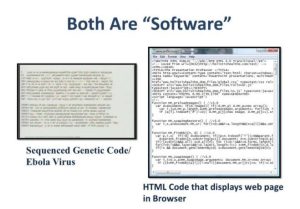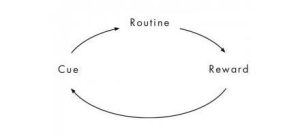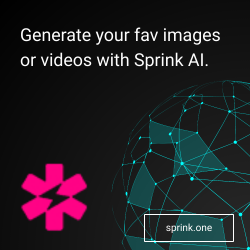Do you struggle with overcoming bad habits? Do you find it difficult to stick with an exercise routine and constantly find yourself back where you started?
If so, what would you think if I told you that you could reprogram your brain and break bad habits similar to how a computer programmer programs code? Sounds crazy right? Yet, it’s not.
Similar to programming computer code, it is possible to reprogram deeply ingrained habits. Computer coding is a perfect metaphor for writing, hacking, or reprogramming our own instructions. We see this when we compare computer coding to habit formation. Think of trying to break bad habits and form new positive habits. Charles Duhigg, author of The Power of Habit remarked,
What we know from lab studies is that it’s never too late to break a habit. Habits are malleable throughout your entire life. But we also know that the best way to change a habit is to understand its structure – that once you tell people about the cue and the reward and you force them to recognize what those factors are in a behavior, it becomes much, much easier to change.
So what exactly is computer coding, habit formation, and how can we reprogram our deeply ingrained habits?
What is Coding?
Coding is a finished set of instructions known as a program. We must write a code in a specific way for the program to work. In essence, we must write code in a language for which a computer can understand it. Many different computer languages exist, such as: HTML5, CSS, C, C++, Python, and JavaScript.
Think of our life as a finished set of instructions. In order to reprogram it, we must write our own code in a way that will change our bad habits. Essentially, we must find a reward system our mind and body can latch on to.
Vomputer code is similar to human DNA and it operates exactly like the code in computer software. Juan Enriquez informs us,
Sequencing DNA decodes its programmatic intentions through its relationship to a combination of four letters of our alphabet: A, C, T, and G.
DNA is a self-replicating material present in all living life-forms and carries our genetic information. Tom Bunzel demonstrates the similarities in his book DNA is Software, Who “Wrote” the Code? by placing a sequenced genetic code side by side with Hypertext Markup Language (HTML), which is the code for a web page.

Coding as a Metaphor for Writing Instructions for Life
My intent here is not to ask who or what wrote our life code (or even how it is done). My intent is to demonstrate that computer programming language (code) is a metaphor for life. The computer program is our life, where the computer code is our habits.

We can change our habits and switch genes off and on through epigenetics. We know that contemporary geneticists are able to switch genes on and off using DNA internal software. Essentially, they are copying and pasting code.
Moreover, coding is writing instructions for computers, where a finished set of instructions is a computer program. Life is no different. Just as coding is writing instructions for a computer, our daily actions and habits are writing instructions for life. Learning to code will create a better computer program, so why not learn your code to build a better you?
Coding (Habit Breaking) Instructions

Charles Duhigg writes that every habit starts with a psychological pattern called a “habit loop” which is a three-part process.
First, we find the cue or trigger informing our brain to go into automatic mode. Second, we identify the routine, which is the behavior itself. Third, we identify the reward, which is the thing that makes our brain remember the “habit loop” in the future.
Let’s examine how Duhigg used the “habit loop” to break his habit of going to the cafeteria and buying a chocolate chip cookie every afternoon.




























































